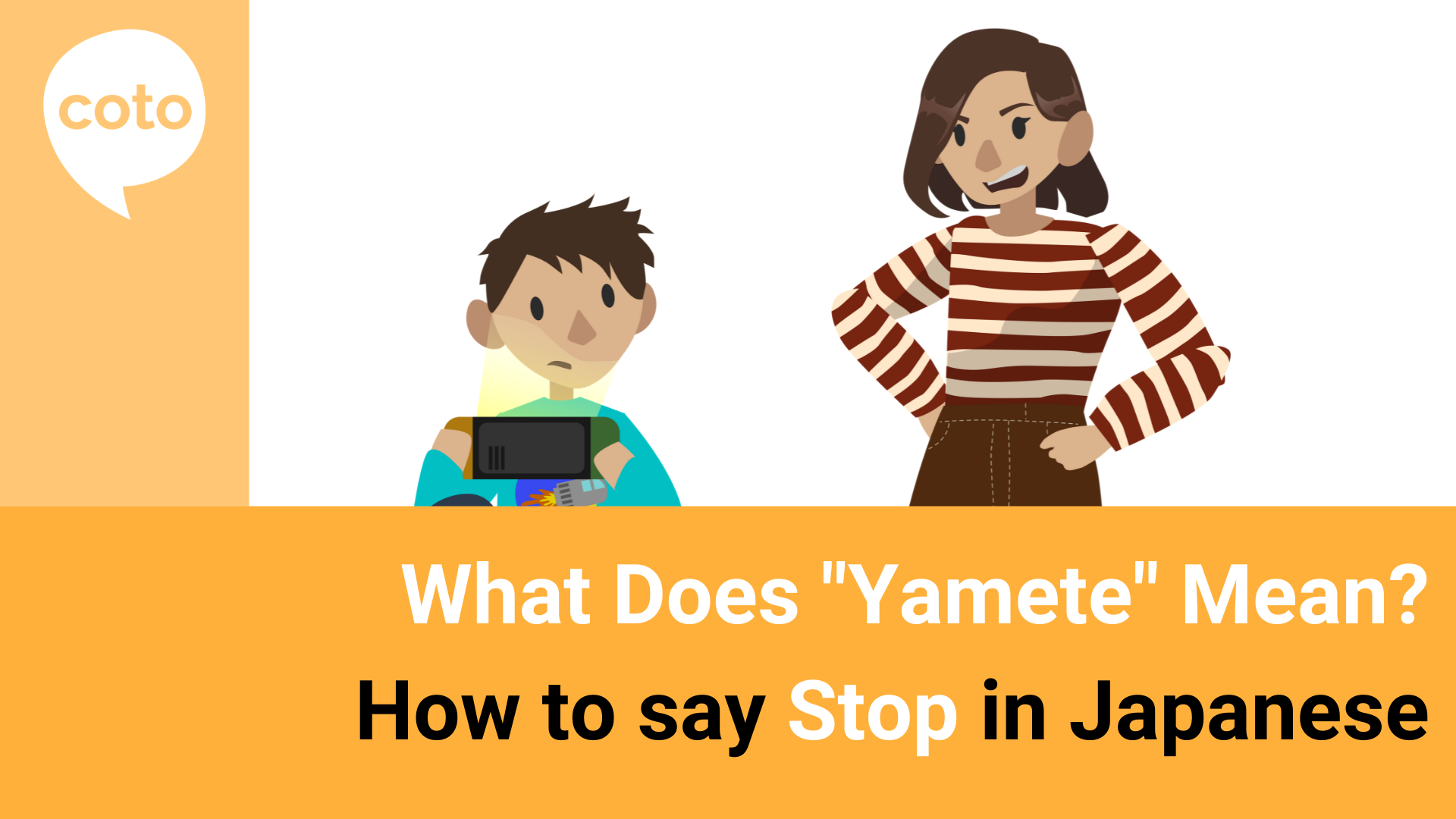Have you ever heard the word “yamete” in Japanese before? Do you know what it means or how to use it?
There is a good chance you have heard this word before if you live in Japan or watch Japanese shows or TV. “Yamete” (やめて) is a relatively basic Japanese word, and can be used for different situations depending on the context and level of politeness.
In this article we are going to look at the word “yamete” and how to use it.
What Does “Yamete” Mean in Japanese?
Simply put, “yamete” means “stop” or “stop it” in Japanese. However, it is quite informal. It can be used between friends and acquaintances – either for lighthearted situations or even more serious ones.
“Yamete” uses the te-form of “yameru” (やめる – to stop; to quit). The kanji (although not often used with this word) is 辞める. This can be seen in words like 辞職する (jishoku) – to quit a job.
As with any te-form verb, it can be used with ください to make it more polite – やめてください.
This difference is comparable to that of “please stop” and “stop it!” in English.
Another way variation used between friends is やめてくれ or やめてくれよ. This is the te-form + the verb くれる. くれる is a casual verb meaning to give. やめてくれ is almost like the Japanese equivalent of “give me a break!” or “cut it out!”
What’s the Difference Between やめて and やめろ?
A stronger variant of the Japanese “yamete” is “yamero” (やめろ). This is the imperative form, and it is much more straightforward. Further, it is basically a command and is not very polite.
やめろ is used in more urgent situations when the speaker is more serious. In other words, it is a stronger expression than やめて “yamete”.
More often than not “yamete” (やめて) is sufficient.
